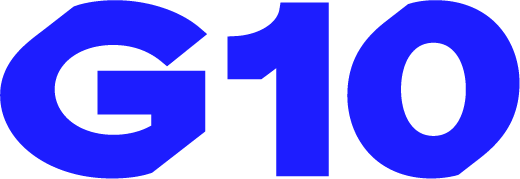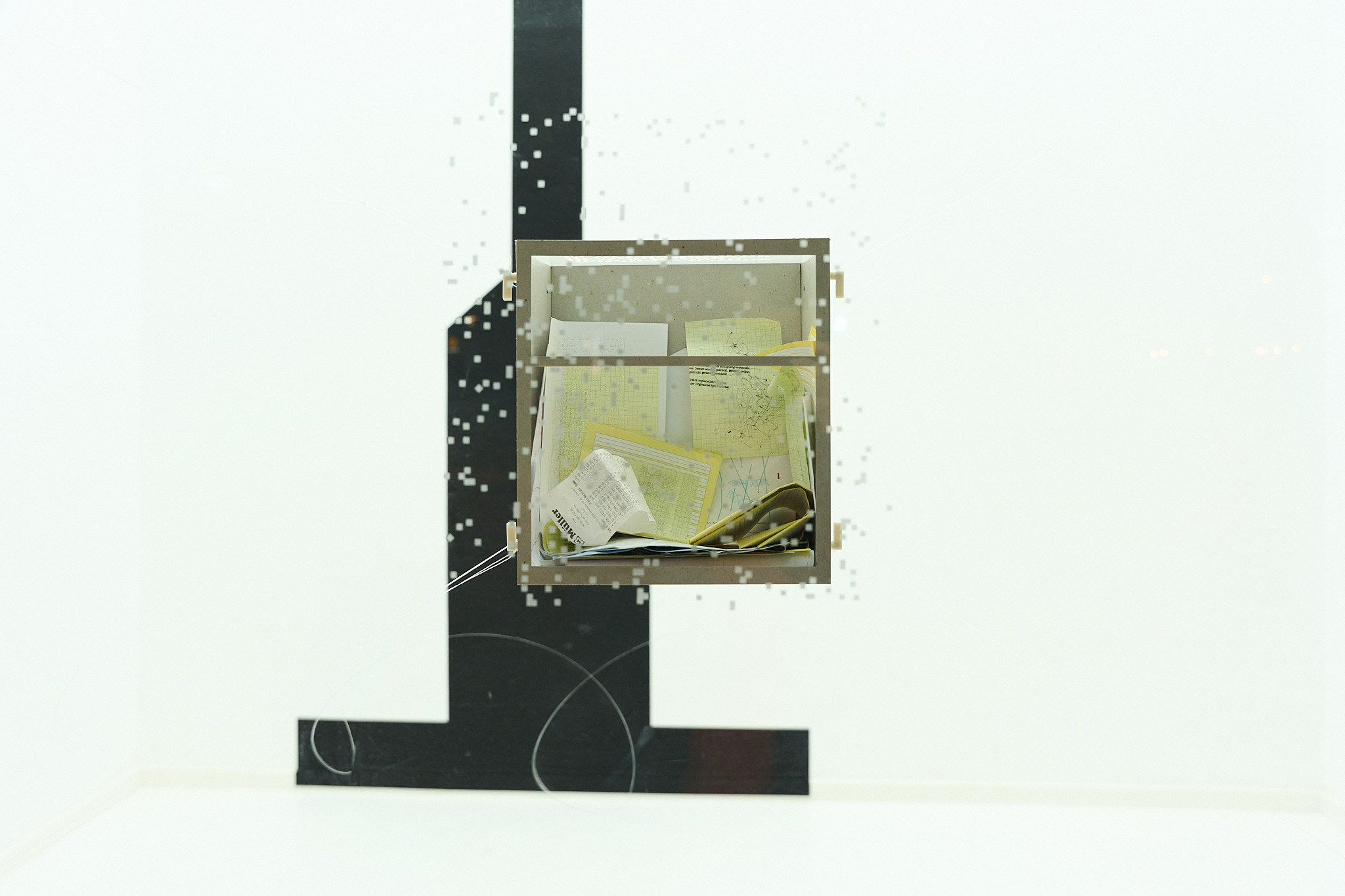


![]()
![]()
![]()
Eyi Kim, Moritz Fischer, Paul Dorgerloh, Simon Gilmer
Verfahren
16.02.24 – 29.02.24
With the first exhibition in 2024, G10 Projektraum invites students from the Hochschul für Gestaltung Offenbach to rethink the space conceptually. The presentation Verfahren shows works that were created as part of the "Copy-Cat" course by Felix Hofmann-Wissner and Paula Schneider in the winter semester 23/24. The
course focussed on the appropriation of various technical processes for the transfer and reproduction of images and writing. In the various works, the artists Paul Dorgerloh, Moritz Fischer, Simon Gilmer and Eyi Kim explore how the use of scribers, cutting plotters, laser cutters, dot matrix printers and 3D printers can influence the artistic process.
Paul Dorgerloh's installation mixes comic-like drawings with elements from pop-cultural events. In his work, he translates statistical data into images and creates a display that is reminiscent of the timelines of animation software. Dorgerloh thus examines narrative strands and social processes, some of which are interrelated and some of which are completely independent of each other. The seemingly randomly juxtaposed figures and motifs appear like a surreally connected causal chain that can be traced back to a common origin.
Simon Gilmer shows a large arrow in the exhibition space. Germany's public infrastructure is characterised by such repetitive symbols or objects that are often overlooked in everyday life. Fire extinguishers, emergency exits, gateways – they look the same in public spaces and convey clearly defined rules. In order to determine hu-man actions, such objects often use pictograms, i.e. symbols that occur everywhere in everydaylife and instruct people through their universallanguage. Arrows can be found in particular on transport and packaging materials. There they indicate how marked objects are carried in relation to gravity; they define top and bottom. Extremely enlarged and detached from its normative context, the arrow exhibited in G10 questions the power relations of the space through its positioning. The confrontational presence of the arrow prompts visitors to examine conventional symbols and objects in their surroundings.
In her artistic practice, Eyi Kim explores the superimposition of layers in painting and various printing techniques. In her exhibited works, she uses existing files that she has saved on her laptop, such as short texts or digital drawings. She layers these using different printing techniques on found office materials such as exercise books or Post Its. Kim’s work Kassetten; 50.1077837, 8.7644137 shows a collection of printed original notes. The box framing this collection refers to the size of the G10 Projektraum and reproduce it on a scale of 1:16. For the booklet Teedu-li* presented next to it, Kim scans the collected prints, arranges them in a new order and prints them on a risograph. The reprinted Post Its are pasted over with printed Post Its.
In Moritz Fischer’s work 100 28, the artist applies a combination of laser and pen plotte techniques and uses cardboard as the basic material. This combination of technique and material reflects the duality of order and chaos in the human mind. The distorted drawings capture the diversity of feelings and ways of thinking.
* Edge in KoreanText: Carolina Maddè
Photography: Nils Heck
Photography: Nils Heck



